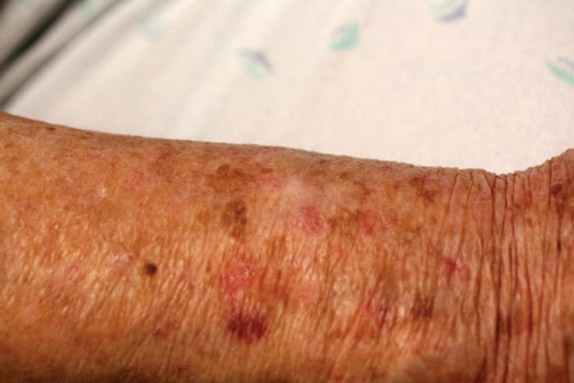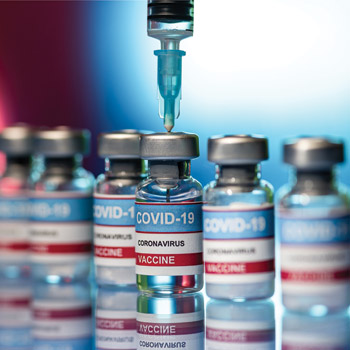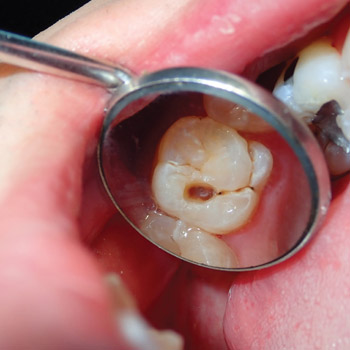MKSAP Quiz: Evaluation for bruising

An 81-year-old woman is evaluated for bruising. For the past few years, she has noticed dark red patches appearing intermittently on the forearms without trauma or other triggers. They are not painful and resolve without treatment. History includes hypertension, for which she takes hydrochlorothiazide.
On physical examination, vital signs, including blood pressure, are normal. Skin is dry, and skin findings on the forearm are shown.
Which of the following is the most appropriate next step in management?
A. Complete blood count
B. Discontinue hydrochlorothiazide
C. Skin biopsy
D. Topical triamcinolone
E. Reassurance
Answer and critique
The correct answer is E. Reassurance. This item is Question 110 in MKSAP 19's General Internal Medicine section.
Reassurance (Option E) is the most appropriate next step in management of this elderly patient, who describes the classic constellation of symptoms of actinic purpura. Actinic purpura appears as purpuric macules or patches, most commonly on the forearms and anterior legs, after minor trauma, such as scratching. It is caused by blood vessel fragility and dermal atrophy from aging. With the passage of time, the macules fade to a brown or tan color before resolving completely. There is no therapy for the purpura, but sun protection is recommended to prevent further damage. No additional testing or treatment is required, and the patient should be reassured.
Other causes of purpuric lesions include immune thrombocytopenic purpura and thrombotic thrombocytopenic purpura. These hematologic diseases require an initial evaluation that includes complete blood count (Option A). This patient's current symptoms, time course, and physical examination findings do not suggest a more sinister type of purpura, and laboratory testing should not be pursued.
Hydrochlorothiazide can contribute to photosensitivity and has rarely been associated with Stevens-Johnson syndrome/toxic epidermal necrolysis (SJS/TEN). Symptoms of SJS/TEN typically develop within the first few weeks after starting hydrochlorothiazide and include red or purple dusky macules on the trunk that progress to vesicles, erosion, and ulceration, with painful erosions in the mouth, eyes, or genitals. Hydrochlorothiazide is not causing this patient's actinic purpura, and discontinuation of this medication (Option B) would not affect the rash.
The diagnosis of actinic purpura can be made on the basis of clinical findings alone. Skin biopsy (Option C) is not necessary.
Topical glucocorticoids, such as triamcinolone (Option D), will not treat actinic purpura. The thinning action of chronic glucocorticoid application on the dermis and epidermis is likely to worsen actinic purpura.
Key Point
- Actinic purpura appears as purpuric macules or patches, most commonly on the forearms and legs of older adults, and requires no testing or treatment.




